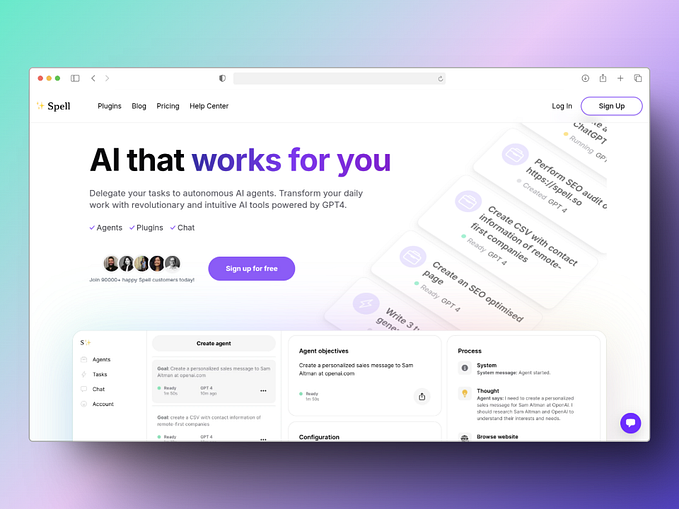The One Sentence / Paragraph / Page Framework

Quick: Which has a longer attention span, goldfish or humans?
Are you still paying attention?
According to a 2015 research report by Microsoft (which seems to have disappeared from Microsoft’s website; here’s a bootleg copy), smartphones and their ilk have so eroded human attention span that the lowly goldfish now ekes out the world’s most advanced species in this respect, 9 seconds to 8 seconds. Of course, that’s an oversimplification of the report’s findings, but the point holds that it’s increasingly hard to keep a person’s focus.
This has important implications for anyone working at a company like Smartling. Sales development reps need to be able to pitch succinctly; account executives need to be able to demo in a way that doesn’t leave the prospect feeling lost; and so on. For this reason, I dedicated 30 minutes to the topic during last quarter’s full-team training (insert joke here about how 29 minutes and 52 seconds of the session was wasted time).
Remember that you aren’t writing the next great American novel; you’re doing business, and prospects and customers just aren’t interested in hearing as much about your product or service as you probably want to share. When I was at Atypon, I came up with what I call the “one sentence / paragraph / page” framework to help my team understand this dynamic, which I’ve used and taught ever since. It works like this:
- For any given question, you should be able to give a one-sentence answer, a one-paragraph answer, and a one-page answer. One-sentence answers are short (literally, one sentence); one-paragraph and one-page answers are longer and as such include more detail.
- When asked a question, assume you’ll only be given one opportunity—and about eight seconds—to answer it. For this reason, you should always give the one-sentence answer first.
- There’s nothing worse than getting the “this is way more information than I wanted” look (except perhaps the “you still haven’t given me the information I want” look), so stop there unless the person asks for more information, in which case you can give the one-paragraph answer and, if necessary, the one-page answer, in that order.
Here’s an example. Smartling’s Global Delivery Network is an infrastructure solution for delivering localized websites and Web applications. Because digital properties are a company’s lifeblood, prospects want to know that they can rely on the Global Delivery Network to work at all times. I’ve greatly exaggerated the questions for emphasis.
- Question: How reliable is the Global Delivery Network?
- One-sentence answer: It’s extremely reliable; it processes more than five billion requests per month with an industry-best 99.99% availability guarantee and zero actual downtime in the last 12 months.
- Follow-up question: Wow. How do you manage that?
- One-paragraph answer: We deploy the Global Delivery Network across five different Amazon Web Services geographical regions, making it virtually impossible for a hardware, network, or utility failure to cause a service interruption. Software changes are released in a rolling manner, which isolates and lessens the impact of potential errors. Finally, in the unlikely event of a service interruption, our IT operations team is available 24/7/365 to restore service quickly.
- Follow-up question: Okay, but what if it does go down?
- One-page answer: This is really a question about how expensive of an insurance policy you want to have in place. 99.99% uptime is just over four minutes of downtime per month, which is barely measureable. Based on our historical performance, most of our customers are comfortable taking this risk. If you want to reduce the impact of a service interruption even further, … [I’ll stop here since this isn’t a post about the reliability of the Global Delivery Network.]
You may have noticed from the example that the one-sentence answer only answers the question; it doesn’t explain the answer. This is intentional. When people ask questions, they’re usually only interested in the answer. Don’t make them hunt for the answer in the explanation, or worse still, make the mistake of thinking you’re giving an answer when you’re actually giving an explanation. I’ve seen both happen all too frequently.
For example:
- Question: How reliable is the Global Delivery Network?
- Answer: 99.99% uptime is just over four minutes of downtime per month, which is barely measureable. Based on our historical performance, most of our customers are comfortable taking this risk.
You answered the question (“99.99% uptime”), but it wasn’t obvious and was actually passive-aggressive (you should just trust us).
Or even worse:
- Question: How reliable is the Global Delivery Network?
- Answer: We deploy the Global Delivery Network across multiple availability zones in five different Amazon Web Services regions…
You literally didn’t answer the question (how reliable), even though you spouted off for a minute or two about your whiz-bang tech.
If you’re a vendor, you’re in the storytelling business. Following the one sentence / paragraph / page framework will keep your stories crisp and on point, ensuring that your message is heard.










